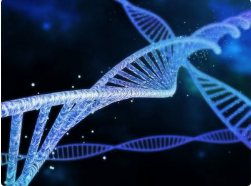



Researchers from Link?ping University are behind a new study that has used artificial intelligence to investigate whether it is possible to discover biological networks using deep learning, in which entities known as "artificial neural networks" are trained by experimental data.Since artificial neural networks are excellent at learning how to find patterns in enormous amounts of complex data, they are used in applications such as image recognition. However, this machine learning method has until now seldom been used in biological research.
"We have for the first time used deep learning to find disease-related genes. This is a very powerful method in the analysis of huge amounts of biological information, or 'big data'," says Sanjiv Dwivedi, postdoc in the Department of Physics, Chemistry, and Biology (IFM) at Link?ping University.
The scientists used a large database with information about the expression patterns of 20,000 genes in a large number of people. The information was "unsorted," in the sense that the researchers did not give the artificial neural network information about which gene expression patterns were from people with diseases, and which were from healthy people. The AI model was then trained to find patterns of gene expression.
One of the challenges of machine learning is that it is not possible to see exactly how an artificial neural network solves a task. AI is sometimes described as a "black box" - we see only the information that we put into the box and the result that it produces. We cannot see the steps between. Artificial neural networks consist of several layers in which information is mathematically processed. The network comprises an input layer and an output layer that delivers the result of the information processing carried out by the system. Between these two layers are several hidden layers in which calculations are carried out. When the scientists had trained the artificial neural network, they wondered whether it was possible to, in a manner of speaking, lift the lid of the black box and understand how it works. Are the designs of the neural network and the familiar biological networks similar?
The scientists then investigated whether their model of gene expression could be used to determine which gene expression patterns are associated with disease and which is normal. They confirmed that the model finds relevant patterns that agree well with biological mechanisms in the body. Since the model has been trained using unclassified data, it is possible that the artificial neural network has found new patterns. The researchers plan now to investigate whether such, previously unknown patterns, are relevant from a biological perspective.